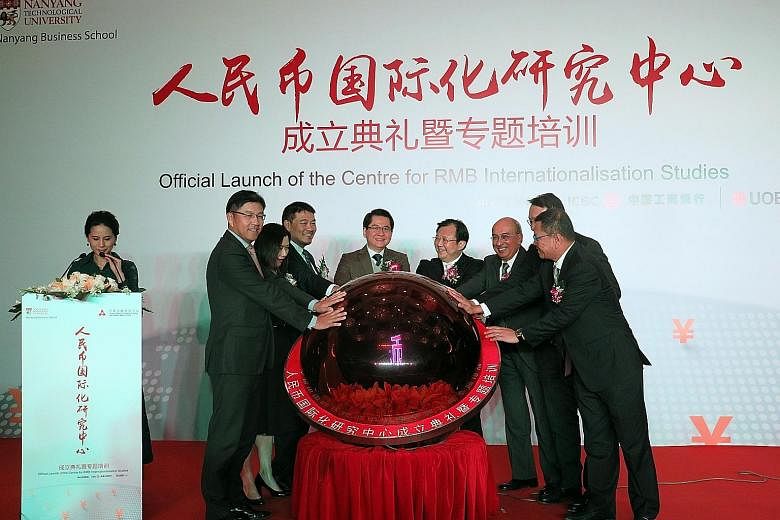A new research centre focusing on the internationalisation of the renminbi (RMB) or yuan has been set up in Singapore even as investor confidence took a beating in recent months amid the Chinese currency's volatility.
The Centre for RMB Internationalisation Studies (CRIS) - a partnership between Nanyang Technological University's business school and the People's Bank of China, China's central bank - was launched in Beijing yesterday. It is the first such joint centre to be set up overseas.
CRIS will help to train policymakers and finance executives in RMB policies and the internationalisation process, Professor Ravi Kumar, dean of Nanyang Business School (NBS), said in his remarks at the launch ceremony.
The RMB is now the world's second most used currency for trade and services, he noted. "We want to play a leadership role in training and preparing leaders on the tremendous impact an internationalised RMB has on the world economy."
Singapore - as the only country in the world offering round-the- clock yuan clearing services and as the second largest offshore yuan settlement centre after Hong Kong - can also further strengthen its position as Asia's leading financial hub, said Prof Kumar.
Last year, the city-state's RMB clearing volume reached more than 60 trillion yuan (S$12.6 trillion).
CRIS will also provide thought leadership on the currency through conferences and forums for top finance leaders and policymakers, NBS said in a statement.
Mr Stanley Loh, Singapore's Ambassador to China, said the launch of CRIS was "timely and relevant" as both countries stepped up cooperation in financial services.
"There is much potential for deeper collaboration," he added. "(We) are working towards the elevation of capital market collaboration to enable Chinese investors to gain greater access to the international markets through Singapore."
The Chongqing Connectivity Initiative - the third government-led project between China and Singapore - will also be used to pilot innovative measures to facilitate greater and smoother financial, trade and investment flows, Mr Loh added.
China is trying to increase the yuan's usage worldwide as it looks to reduce the US dollar's dominance in global trade. But confidence in the RMB has been dented since a sharp devaluation last August. Global use of the yuan for payments also dropped last month, a possible sign of investor jitters and a stagnation in the internationalisation of the yuan.
Its global share by value fell to 1.76 per cent in February from 2.45 per cent in January, according to payment services provider Swift.
But the director of CRIS, Associate Professor Lee Boon Keng, said while the "pause" might be due to market volatility and worries over China's development and economy, this stunted development is likely to pass in the longer term.
"International trade as far as China is concerned is now at a stage that you can no longer not use RMB as a settlement currency," he said.
"The more significant challenge is how to make the RMB a reserve currency. For that... there has to be free exchangeability and a high level of confidence in the currency."

